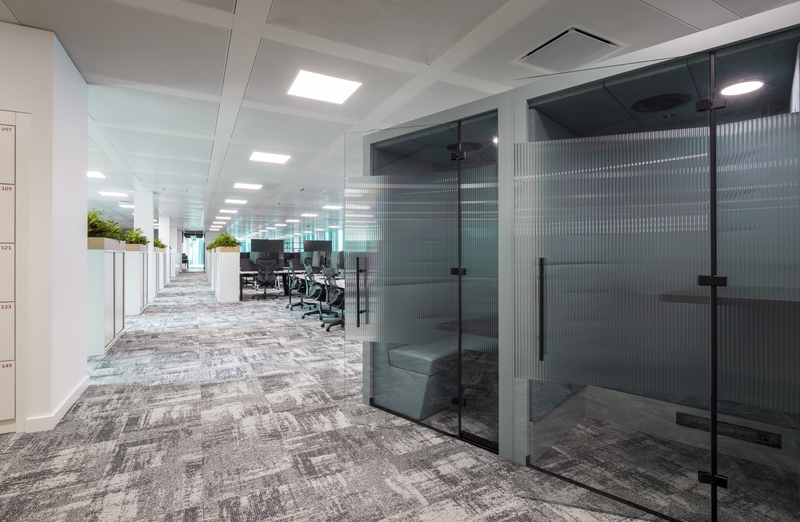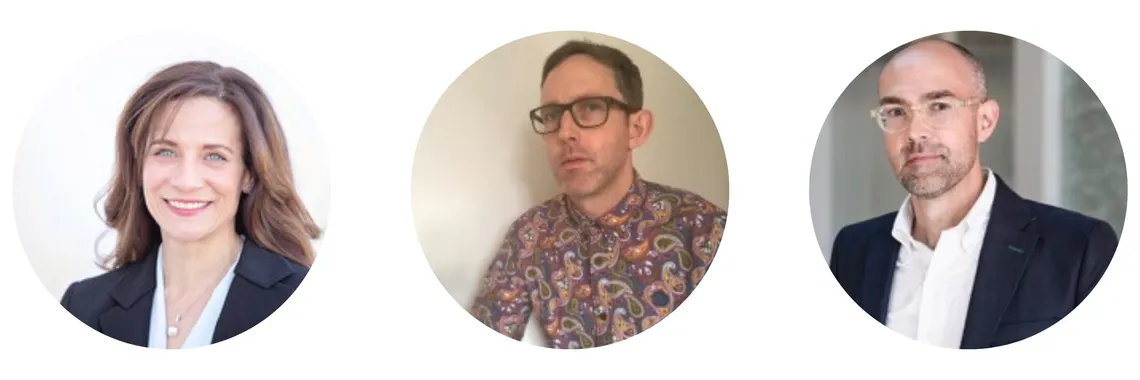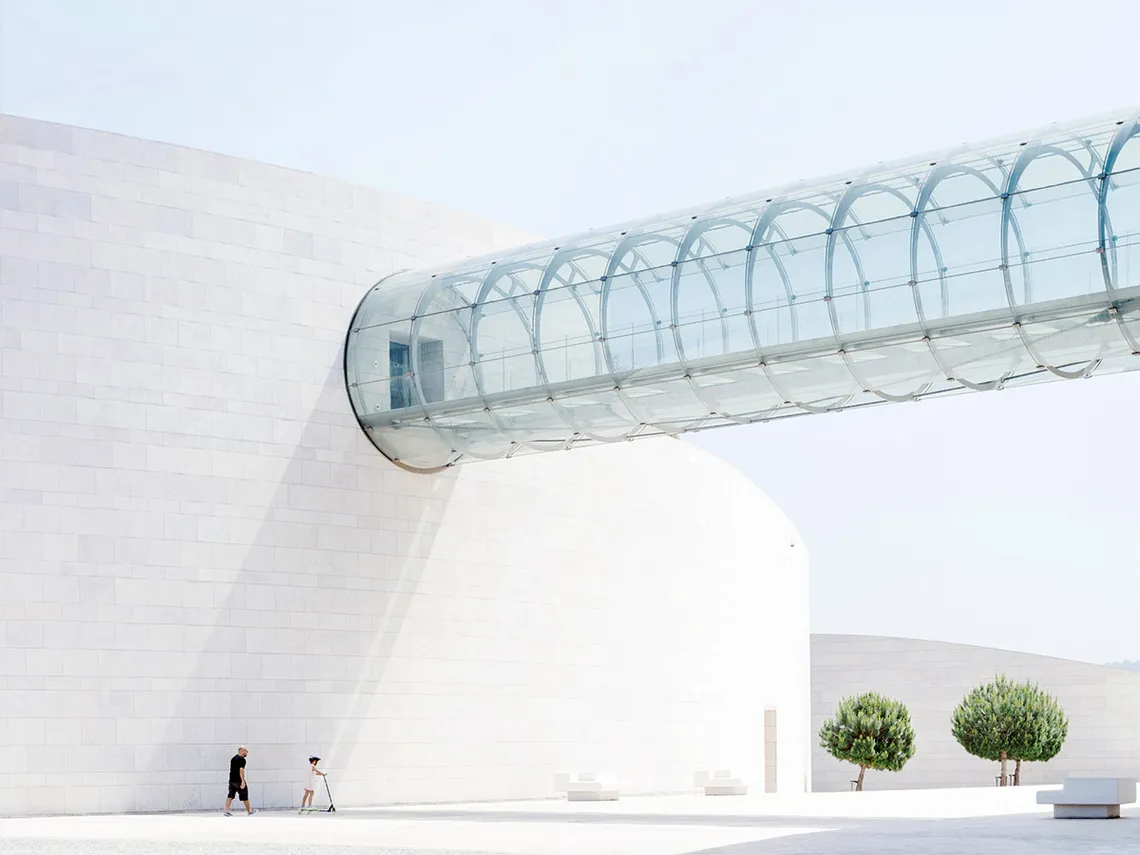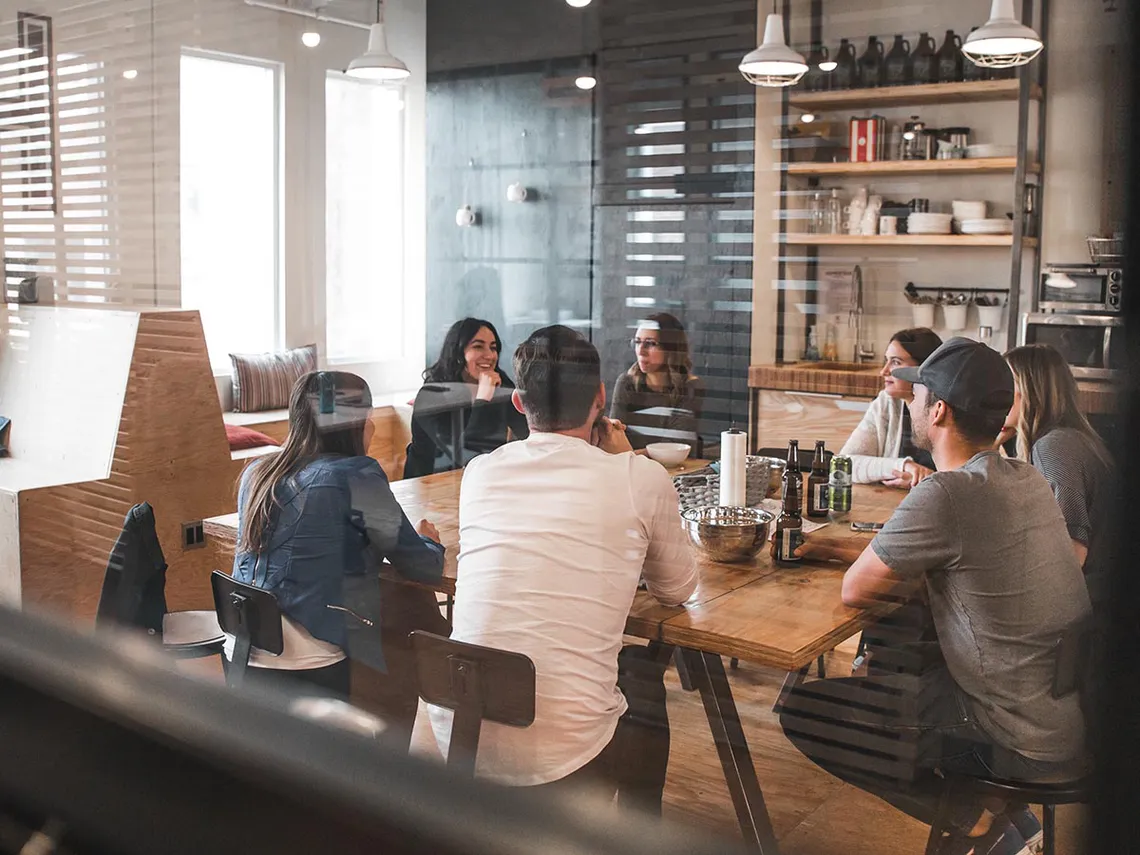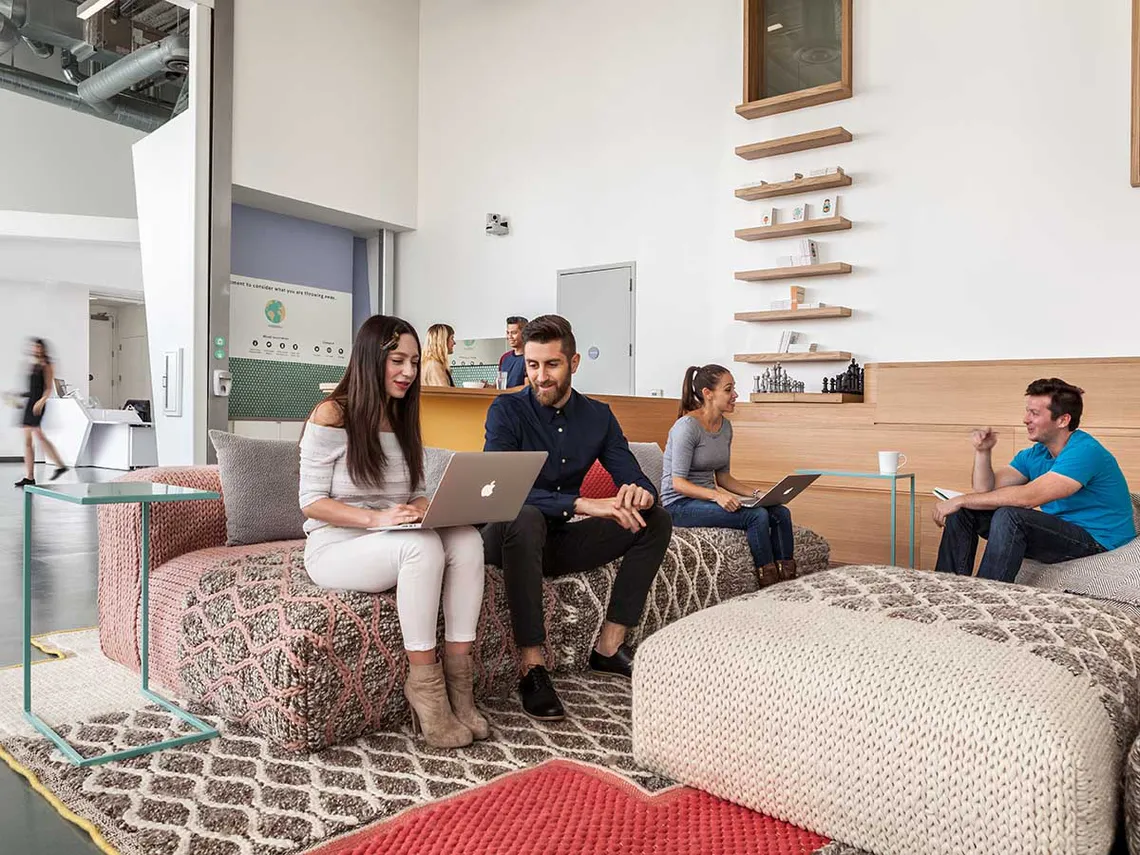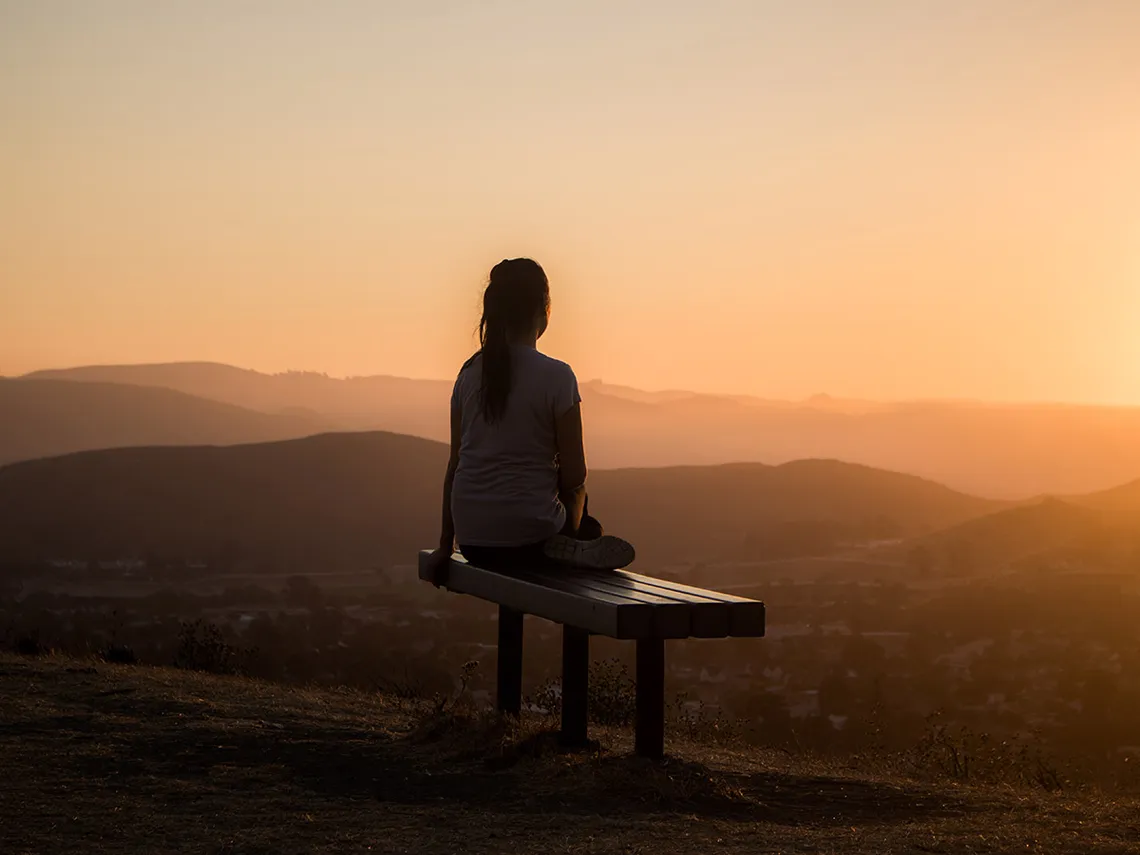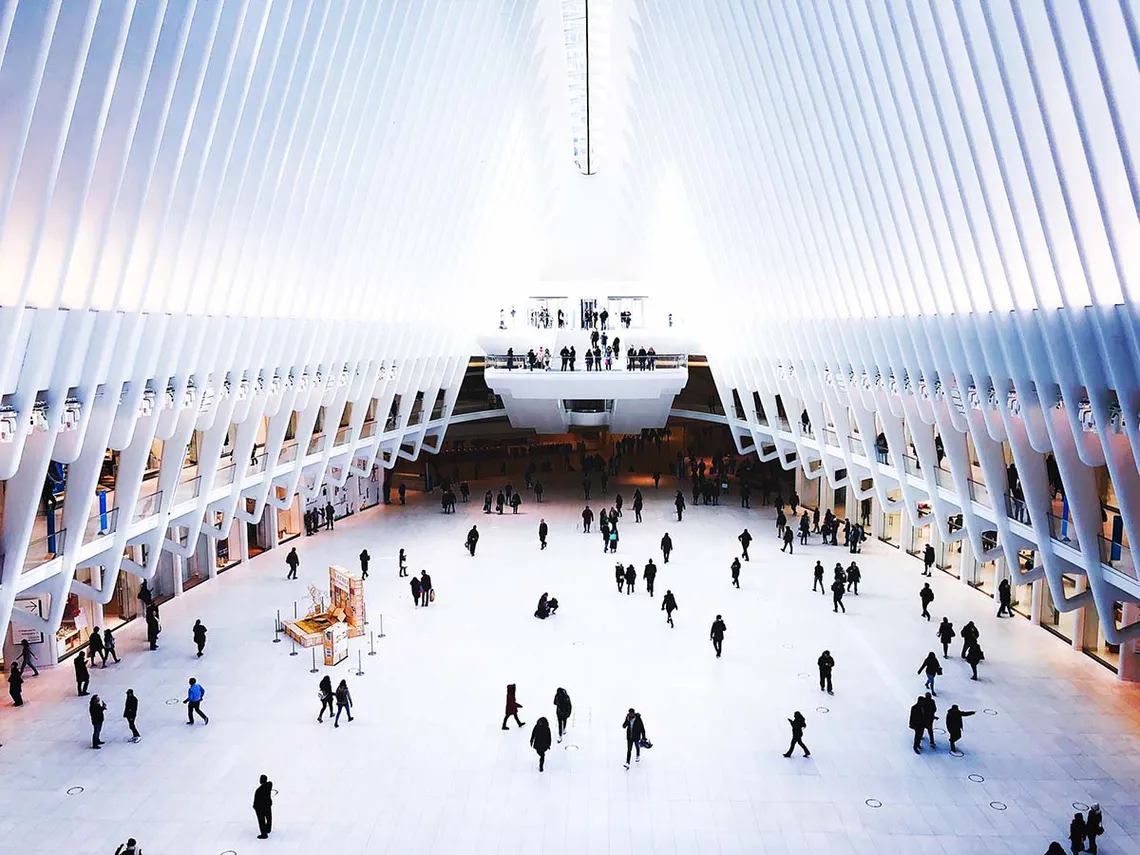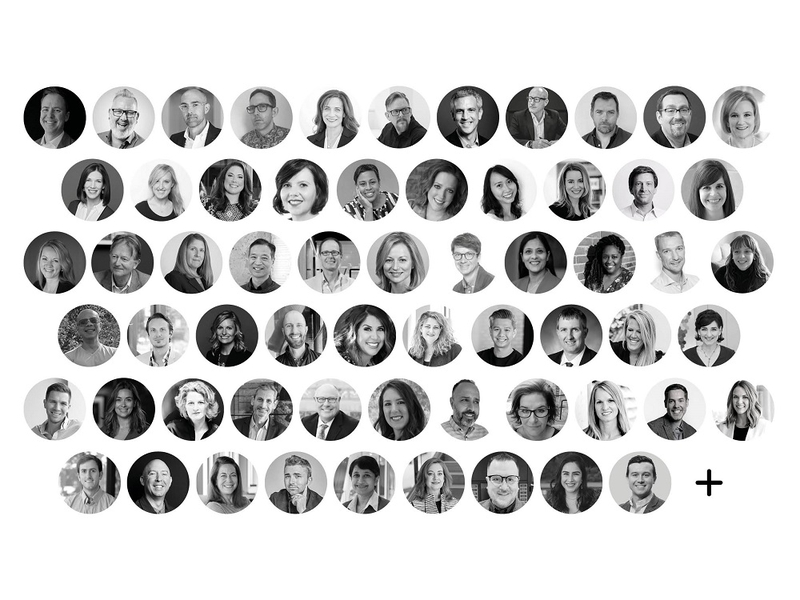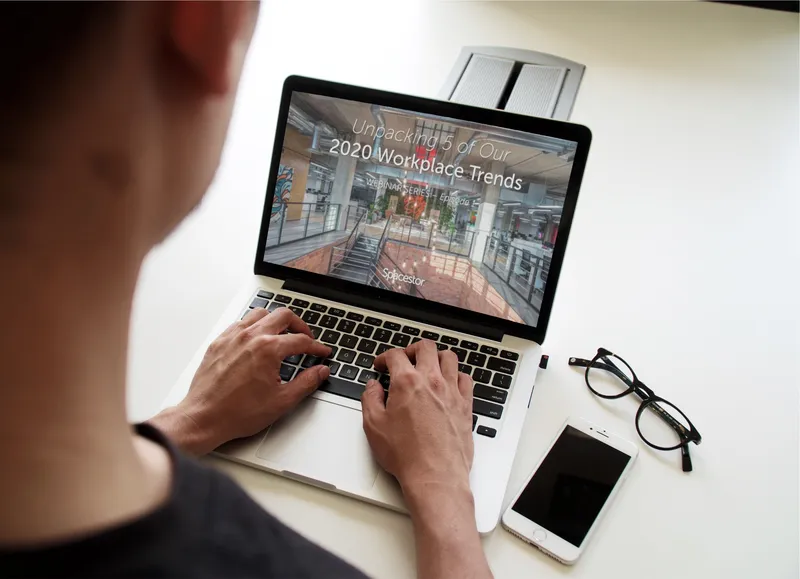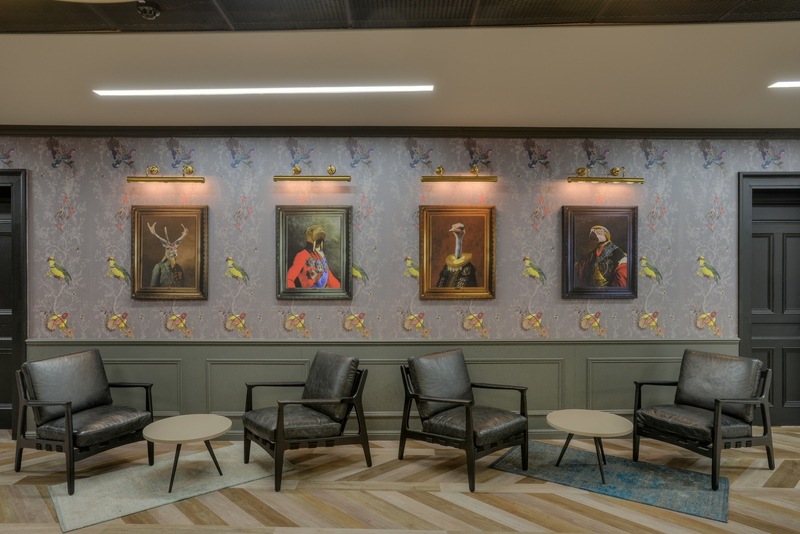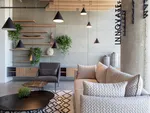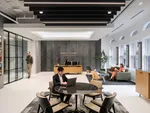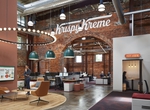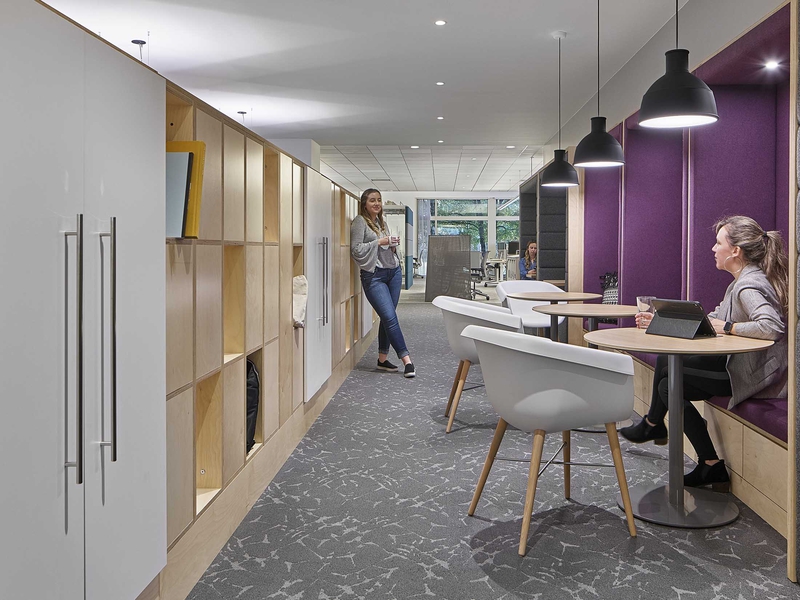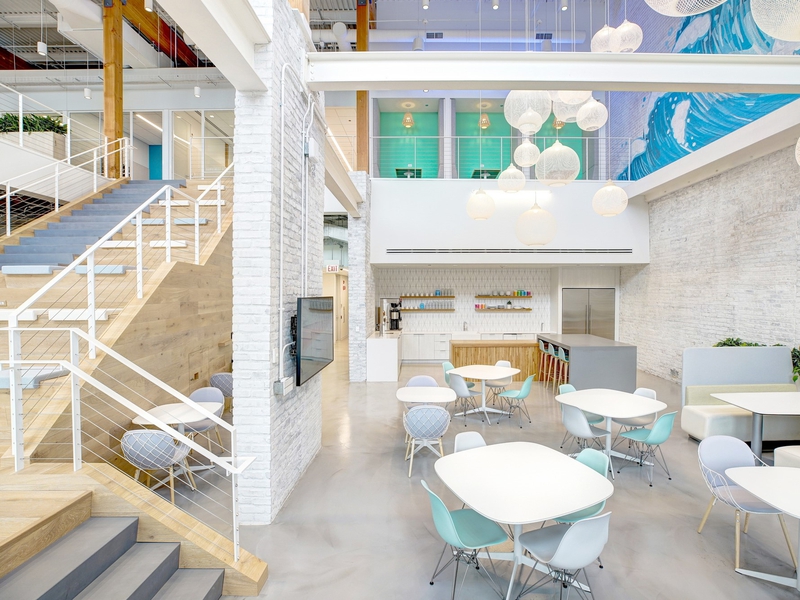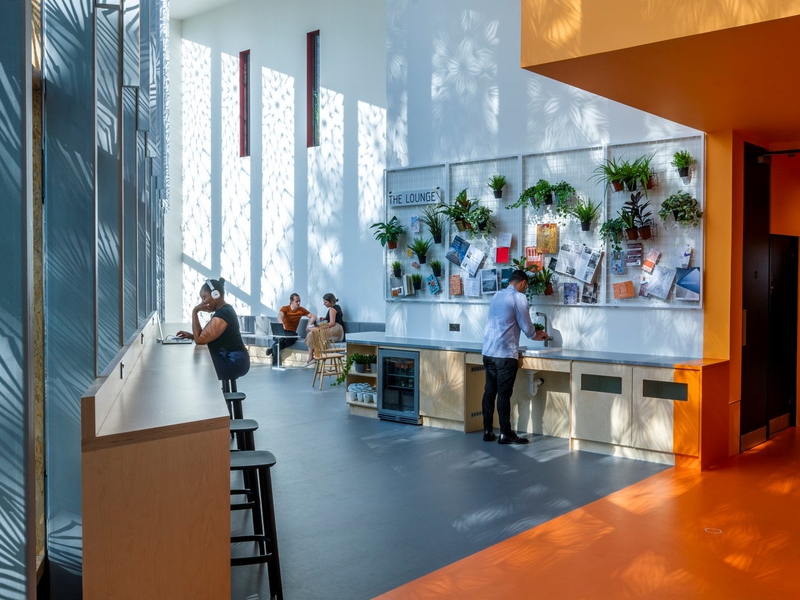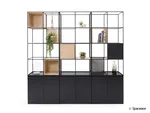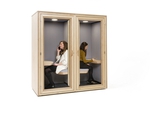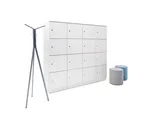8 May 2020
Industry Trends, Return to the Workspace Solutions
“What will the post-Covid workplace look like?” It’s the question dominating the world of commercial architecture and interior design right now. And whilst we can be as bold and dramatic as we wish in the predictions we might proclaim, the truth is, nobody can really predict the future.
The first two panel discussions hosted via our Insights Lives series, brought together leading industry minds and ignited some insightful dialogue on both the immediate and long-term futures of the workplace, which we explore further below.
To attend upcoming panel debates, register here.
April 23rd - Panellists
- George Muir - Futurist and Keynote Speaker. Owner of Udal Cuain AB
- Rob Atkinson - Project Manager, Senior Associate at IA Interior Architects
- Basia Dzaman - Digital Transformation at Spacestor
April 28th - Panellists
- Adrienne Rowe - Global Director, Workplace Strategy at Merck
- Andy Swann - MAT Studios, Author, Speaker
- Philippe Paré, AIA - Managing Director at Gensler, France
Through collective visualisation on how the workplace may look as we return, these discussions brought forward some interesting predictions and opinions as to the road ahead. So, we thought we’d try and summarise some of the key ideas discussed.
We’re hearing a huge amount of speculation on what the workplace will look like as we gradually emerge from lockdown, and the great impact of this global pandemic on how we work. In his opening remarks, Philippe Paré, made the point that we need to try to ‘steer away from short-term reactions and hysteria, and see what this crisis is teaching us’. He then went on to say, as later emphasised by Andy Swann, that ‘one overwhelming conclusion is that working from home works, and it’s incredible how we’ve been able to adapt in such a quick timeframe and essentially, keep business going in a way that was perhaps beyond our craziest expectations’. The norm has been challenged, we’ve proved it’s possible, and now is a time for organisations to rethink workplace strategy and the formulas that have been relied on up until now.

A New Purpose for the Workplace
So the question is, why will we go to the workplace in the future? What will it be used for? And what will space planning look like? As Adrienne Rowe pronounced, “we’ll never go back to pre-Covid ...we’ll need to embrace distributed work even more than ever before”. Both George Muir and Philippe Paré were alluding to a gradual return to the workplace. George Muir predicted that “returning to the office is going to be slow, but sure”, whilst Philippe Paré foresees that “people will need to be enticed back to the workplace”. Taking a more detailed look at the working environment, Rob Atkinson proposed that “it’s possibly going to be more of an environment with some mix of remote working, and there’s going to be a far greater reliance on collaborative technology where people are in virtual environments and part of that is going to be the workplace environment itself”.
So how will this cause workspace design to evolve? Philippe believes that the “mix of the nature of the workplace will change” and taking a look at it from a space planning perspective, and how this will be affected by the safety aspect of social distancing, Adrienne Rowe said she didn’t see that companies would be investing more in real estate to make bigger workstations but that she sees “fewer individual desks in the workplace, but bigger ones and spread further apart, and more of an emphasis on those environments where people can come together”.

Culture & Community
A consistent theme that shone out of these panel discussions was culture and community. In the current context, everyone is missing being physically together; it’s an essential need of human nature. Everyone is craving that sense of community. Or can this be replicated virtually? This question formed a key topic for debate, out of which we can confidently conclude that the workplace still has a place, however the way in which we use it is likely to change.
Philippe Paré believes that “the physical workplace will always have a role to play as the anchor”. The workplace is the embodiment of a company’s culture, and a physical manifestation of its brand. Philippe Paré emphasised this fact, and related it to the situation we all find ourselves in: “you have to look at it from the perspective of the workplace being really important for you to do all those things that aren’t done so easily from home, and I think it will reaffirm the importance of the workplace when it comes to collaboration, building social capital, and using the workplace as the physical manifestation of a company's brand. When a brand is well-crafted, the brand is a vehicle to express vision, mission and engagement, and I think people will be craving to see what companies stand for and how precisely they react when there are crises like these ones.” We have to see the value and importance of the workplace forming the tangible nucleus of a company’s identity, the foundational platform to create the communal experience that’s unique to the brand. As Rob Atkinson said “communities engender loyalty, and make people feel part of something greater than themselves”, and looking ahead, Adrienne Rowe predicts that “the real attraction to coming to the office is going to be community”.

Flexibility & Adaptability
Evolving with such unprecedented uncertainty means companies are going to have to be more flexible than ever. Organisations will be wholly reliant on a flexible framework that supports agility in order to survive. Not only would this apply to workspace design, but also to the organisational and human aspect. Management and leadership will have to adopt a flexible mindset and be willing to accommodate the changing needs of their employees through innovation, giving them the freedom to blend the experience according to their personal preference, which will require a certain element of trust. As Rob Atkinson said managers, particularly “those anxious about dealing with teams that might expand or contract”, are “going to have to evolve with that same level of uncertainty”.
Strategies will have to be rewritten, and as Rob also said “the way managers did things in the past has to change, not only are they going to have to navigate the safety and wellbeing of the current workforce, but they’re also going to need to insulate their business against change that’s not necessarily viral change, but technological change”. Skillful change management will be essential for preparing the workforce for this new era of the workplace, and as Andy Swann says, people will need to be given “freedom within parameters”. People have proved that this new working environment in the home works, and Philippe Paré made the point that “workers in general have gained new leverage in terms of their expectations as far as being in power to work where and when best suits them. It holds on companies to keep that trust going and realise that actually it can be a win-win.”

Safety & Wellbeing
For the short-term post-Covid workplace, employee safety and wellbeing will be paramount - it’s become a life or death matter. George Muir said “there needs to be an immediate reaction to make people feel safer”. Most importantly this applies to hygiene and personal health; having the reassuring sense that the environment around you is clean and you aren’t in too close proximity to your colleagues. Looking beyond this, creating an aura of safety and hygiene in the workplace is something that will perhaps be sustained into the future, and will have a greater impact on the design of future workspaces.
Furthermore, another dimension to this is the more emotional aspect. The greater we understand one another psychologically, as humans, the better we can craft a new user experience in which people will feel both safe and respected. Adrienne Rowe made the point that the way in which we’re all experiencing this virtual environment and home working experiment together is “engendering an empathy which will help our collective wellbeing in mental health. The more we can think of each other as humans and really understand each other at that deeper level, the better off we’ll all be”.
Moving on to the more practical aspect of wellbeing, how do we make the environment feel safer? Adrienne Rowe raised an interesting point as to “resetting and really treating those environments like hospitality environments so that people feel safe and comfortable in them on a day-to-day basis.” So, regarding these spaces in a different light, and with greater respect, would engender a thorough, and higher level of maintenance. This will also likely be an area where we see a vast amount of technological innovation take place to support that sense of safety. Philippe mentioned “a number of technologies that make the experience seamless and touchless. For example, cleaning particles will be made visible so that you feel like it’s clean and hygienic.”
Another technique we’ve seen publicised, and one that was drawn attention to and analysed during our panel discussions, is the six foot office. This was challenged with the question of sustainability; will this concept apply to the workplace in the long-term future? As Adrienne Rowe said “the reality is that in the long-term, people will come together in closer than six foot proximity. It does not make sense to have a rigid six foot office … I think we need to be sensible about these things and recognise that we are going to be in closer proximity in the future, and that the office doesn’t bear the sole responsibility of keeping people six feet apart”.

Conclusion
It’s clear that there is not one definitive answer to the situation we all find ourselves in. However we are all going through the same experience together, which will no doubt teach us some interesting life lessons and result in some positive outcomes. “The answer is multi-dimensional” as George Muir said; there are many different aspects to consider and carefully manage. However, we can be certain that if we adopt a flexible and innovative mindset, and as Rob Atkinson said “develop a structure that can support agility”, we will be able to evolve at a faster pace than ever before in response to this unexpected global crisis. Foresight beyond the immediate future will be valuable, as Philippe Paré said, “we cannot fall victim to hysteria, we have to be able to see beyond the short-term. There’s the reality of now, but two years from now will be very different”.
And the workplace still has its place. At this stage, a virtual environment is not set to override the necessity of a physical space that brings people together, fosters human connection and nurtures culture and community through brand engagement. Philippe Paré believes “the workplace is here to stay, it will only get more intense” and that “we need to turn up the volume”. Andy Swann brought up a great analogy: “you can support a sports team without being in the stadium, you can be the other side of the world, and watch the matches, see the results, but really the most intense connected experience you’ll have with that team is in the stadium on match day”. Philippe developed this further, applying it to the workplace: “the workplace needs to become that very intense place ...you want to make that a memorable, impactful place, knowing that people perhaps will spend fewers hours there”.
Share this article




